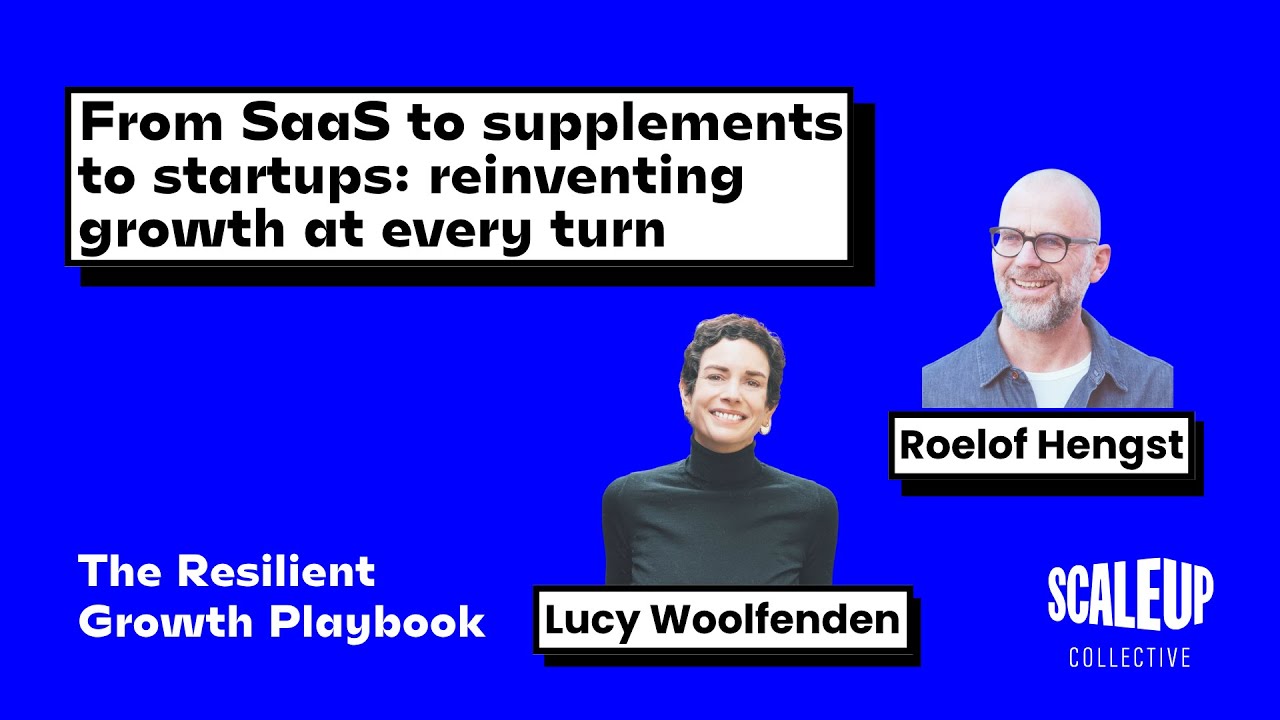Harnessing the power of OKRs for sustainable business growth: Insights from Roger Longden

At the end of last week I sat down with Roger Longden, founder of There Be Giants. We got into the nitty gritty of OKRs (Objectives and Key Results) and how they can help businesses grow by aligning teams around the most important goals.
A common reality for many founder-led teams is there being a big gap between the plans that are made by the business, and what work actually gets done. Many businesses find they either stall as soon as they’re let out of the blocks or the energy fizzles out after a few months. But when they get this bit right, it really accelerates progress.
Roger shared learnings from his 15 years of experience helping founders scale their businesses without losing focus on what matters most. Whether you’re brand new to the concept or have been using them for a while - I promise there’s something useful in this for you!
Catch up on the session in full here, or read on for the highlights. Let’s get into it.
OKRs are a powerful framework for setting goals and measuring progress
OKRs are designed to measure the transformational activities that will help move the business forward. They force you to be ruthless about the few things you’re going to do to make progress. The clarity this brings means your team members won’t be looking to you each week to say ‘where should we focus our time this week?’ because they’ll know what they need to do.
They’re an adaptable way of executing against your plan that brings teams together
OKRs bring with them a whole ethos around transparency, accountability and collaboration. The shared ownership element encourages teams to work together. The flexibility means you can adapt your plans based on learnings and changing circumstances whilst staying focused on the most relevant priorities. And the habits you build around them (e.g. regular check-ins) keep teams accountable, and means you don’t find out too late that things aren’t going to plan.
OKRs act as a spotlight, highlighting the most important areas for change
Trying to use your OKRs as a "floodlight" by applying them to everything happening within the business can overwhelm teams and ultimately reduce their effectiveness. We all know spreading ourselves too thin means no real progress gets made.
Instead, your OKRs should act as a “spotlight” - encouraging you to focus on the few, most important things you need to work on as a business to make progress.
Your key results are not a to do list!
We're all predisposed to prove that we're busy. But don't try and fob off a key result as a list of tasks. It's not. If you’ve got a to do list, ask yourself - if you complete all that, how do you know if it’s been worthwhile? That's the result you're aiming for.
The key thing here is that when you’re setting your OKRs with your team, you’re not asking them to commit to completing a predefined list of tasks. You’re giving them the autonomy to decide what work they do day to day in order to achieve that key result.
OKRs should be assigned to teams, not individuals
An individual employee should have zero OKRs. They’re not a means for performance evaluation. They’re there to drive collaboration and so work best at a team level.
It’s important to note that not everyone, or every team, will be in a position to contribute towards the transformational priorities of the organisation, particularly if they're in a fairly operational role doing repeatable, transactional work - and that’s OK.
Involve your team in defining the OKRs, but you need to set the vision
Don’t write the OKRs on behalf of your teams and hand them out. As the leader of the business it’s your job to spend the time upfront nailing down the priorities from a strategic level, then you should ask your team what they think the business needs to focus on to deliver against those priorities.
Psychological safety is key for implementation
For OKRs to work, it’s absolutely essential that you create an environment where people feel comfortable speaking up and challenging what's being said without the fear of consequence.
Hard conversations are inevitable, because more often than not, especially if you’re being really ambitious, you won't always hit the mark. And that’s OK as long as you understand why, and what you need to do to get there. If people feel afraid to speak up, to be honest about their progress - that’s when problems occur.
KPIs & OKRs are different types of performance measurement
Roger has a great metaphor for the difference between KPIs & OKRs: your KPIs are like the car dashboard–they tell you how much fuel you've got in the tank and how fast you're going, but they don't tell you what direction to go in. That comes from the sat nav - your OKRs.
Define your KPIs so that they're keeping a track of the health of the business, and use your OKRs to reflect where the business needs to go next.
OKRs aren’t about doing more—they’re about doing the most important things better
Whether you're new to OKRs or a seasoned user, there's always more to learn about how they can drive business growth and team alignment. Roger’s insights show that OKRs are more than just a tool for setting goals—they’re a framework for transforming how your team collaborates, stays accountable, and makes progress on what truly matters.
By focusing on the right priorities, fostering transparency and empowering teams to take ownership, OKRs can be a game changer for scaling a business.






